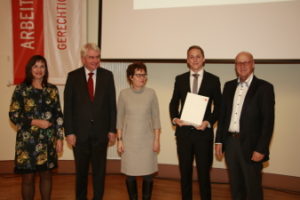 Christian Promper, alumnus of the master course Information Technology & Systems Management, was awarded with the “AK Wissenschaftspreis 2017” for his thesis titled “Anomaly Detection in Smart Grids with Imbalanced Data Methods” supervised by Dominik Engel.
Christian Promper, alumnus of the master course Information Technology & Systems Management, was awarded with the “AK Wissenschaftspreis 2017” for his thesis titled “Anomaly Detection in Smart Grids with Imbalanced Data Methods” supervised by Dominik Engel.
This year’s research question of the Salzburg Chamber of Labor was how to improve the working and living conditions of workers in terms of distributive justice.
Detection of anomalies in Smart Grids
In his thesis, Christian Promper dealt with anomaly detection in Smart Grids. The detection of anomalies plays an important role for the trouble-free future energy supply with Smart Grids.
“Currently there is little experience in smart grid anomaly detection. Since anomalies are rare, the use of common detection methods causes poor detection of anomalies, because the imbalance results in significantly more data items being attributed to common behaviour rather than anomalies within smart grids,” says Promper.
As part of his work, he therefore examined various methods to improve the detection rate for rare irregularities in data sets. In a first step Promper examined various ways to account for imbalanced data in general. In addition, Promper created a three-layer smart grid architecture with intrusion detection systems using imbalanced data methods at each level. This proposed approach outperformed common methods.
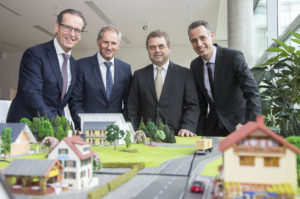
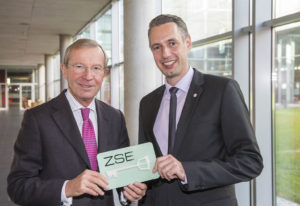
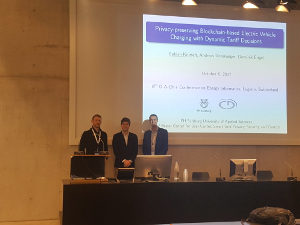 Fabian Knirsch together with Andreas Unterweger and Dominik Engel researched the use of privacy preserving blockchain technology in the energy trade for electric vehicles charging stations.
Fabian Knirsch together with Andreas Unterweger and Dominik Engel researched the use of privacy preserving blockchain technology in the energy trade for electric vehicles charging stations.![[PDF]](https://www.en-trust.at/wp-content/plugins/papercite/img/pdf.png)
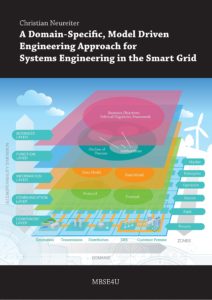 Christian Neureiter, the original author of the SGAM Toolbox, has successfully completed his PhD thesis on “A Domain-Specific, Model Driven Engineering Approach for Systems Engineering in the Smart Grid”.
Christian Neureiter, the original author of the SGAM Toolbox, has successfully completed his PhD thesis on “A Domain-Specific, Model Driven Engineering Approach for Systems Engineering in the Smart Grid”.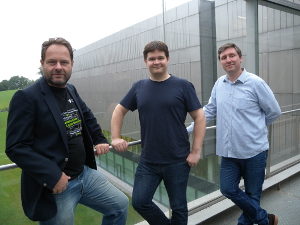 from renewable sources, electricity will be generated in a distributed way and the current power grid will transform to a Smart Grid. This creates new demands on the supply networks and the ICT infrastructure.
from renewable sources, electricity will be generated in a distributed way and the current power grid will transform to a Smart Grid. This creates new demands on the supply networks and the ICT infrastructure.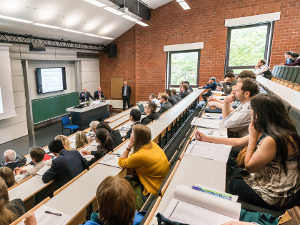 ommunication, OPC UA simplifies the exchange of data between machines and devices and enables a high level of data exchange between manufacturers and platforms.
ommunication, OPC UA simplifies the exchange of data between machines and devices and enables a high level of data exchange between manufacturers and platforms.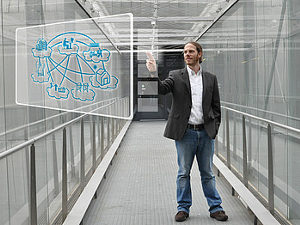 The realization of the Smart Grid plays a fundamental role towards implementing the turnaround in energy revolution. However, since the electricity network is very complex, it is necessary to provide a working basis through abstracted models for all involved parties.
The realization of the Smart Grid plays a fundamental role towards implementing the turnaround in energy revolution. However, since the electricity network is very complex, it is necessary to provide a working basis through abstracted models for all involved parties.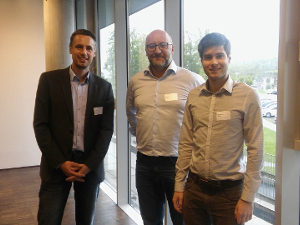 urrently resounded throughout the land. Although it was initially introduced to support the digital currency Bitcoin, this decentralized technology cannot only be used for the financial section, but also for other areas of business.
urrently resounded throughout the land. Although it was initially introduced to support the digital currency Bitcoin, this decentralized technology cannot only be used for the financial section, but also for other areas of business.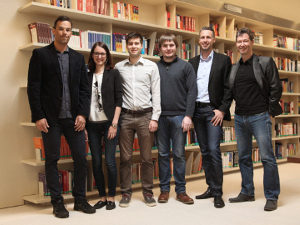 The digitalization of the energy domain is a key factor for a successful energy system transformation. Intelligent energy systems – Smart Grids – will enable the large scale use of distributed, renewable energy resources. Moreover, Smart Grids will foster important applications such as electric mobility and Smart Home solutions.
The digitalization of the energy domain is a key factor for a successful energy system transformation. Intelligent energy systems – Smart Grids – will enable the large scale use of distributed, renewable energy resources. Moreover, Smart Grids will foster important applications such as electric mobility and Smart Home solutions.